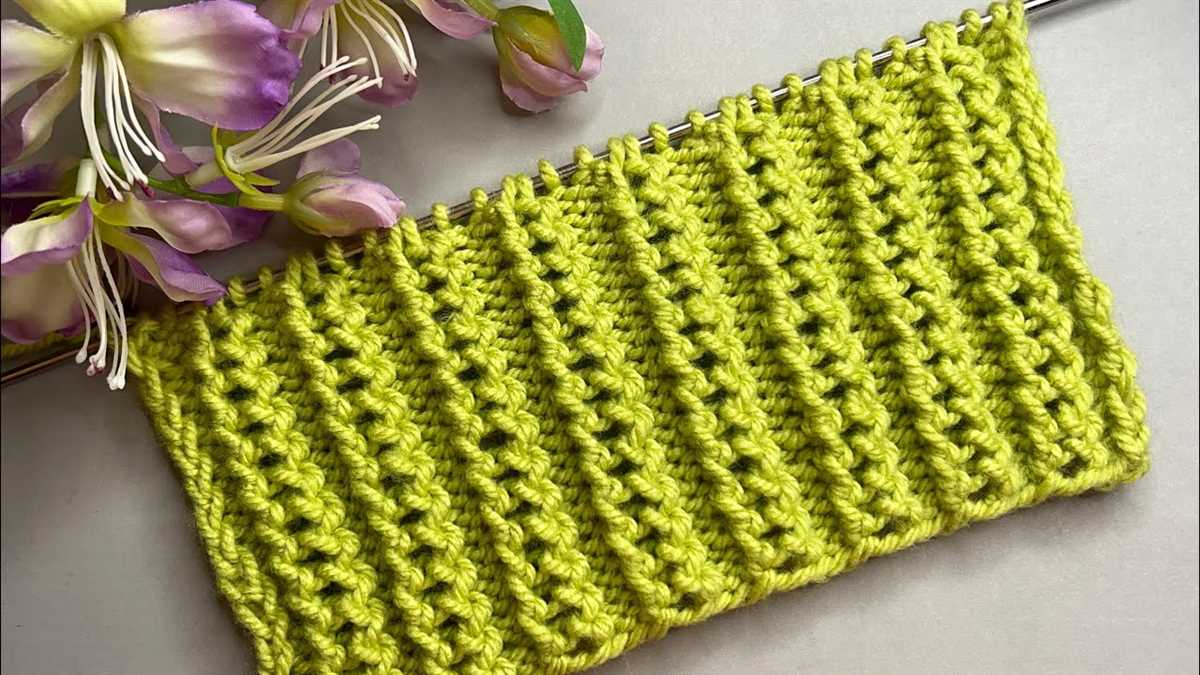
Lace knitting is a beautiful technique that can create delicate and intricate patterns. One popular choice of material for lace knitting is cotton yarn. Cotton lace knitting patterns are perfect for creating lightweight and breathable garments and accessories, making them ideal for warm weather. Whether you’re a beginner or an experienced knitter, there are plenty of cotton lace knitting patterns to choose from.
One of the advantages of knitting with cotton yarn is its versatility. Cotton is known for its strength and durability, which makes it a great choice for creating delicate lace patterns. Cotton lace knitting patterns can be used to make a variety of items, including shawls, scarves, and even summer tops. The breathable nature of cotton also makes it a comfortable choice for garments that will be worn in warmer climates or during the summer months.
When it comes to cotton lace knitting patterns, there are endless options to explore. From simple and elegant lace designs to more intricate and detailed patterns, there is something for everyone. Whether you prefer a classic look or something more modern and unique, cotton lace knitting patterns can be adapted to suit your personal style and preferences. The versatility of cotton yarn allows for endless possibilities, making it a popular choice among knitters of all skill levels.
Cotton Lace Knitting Patterns
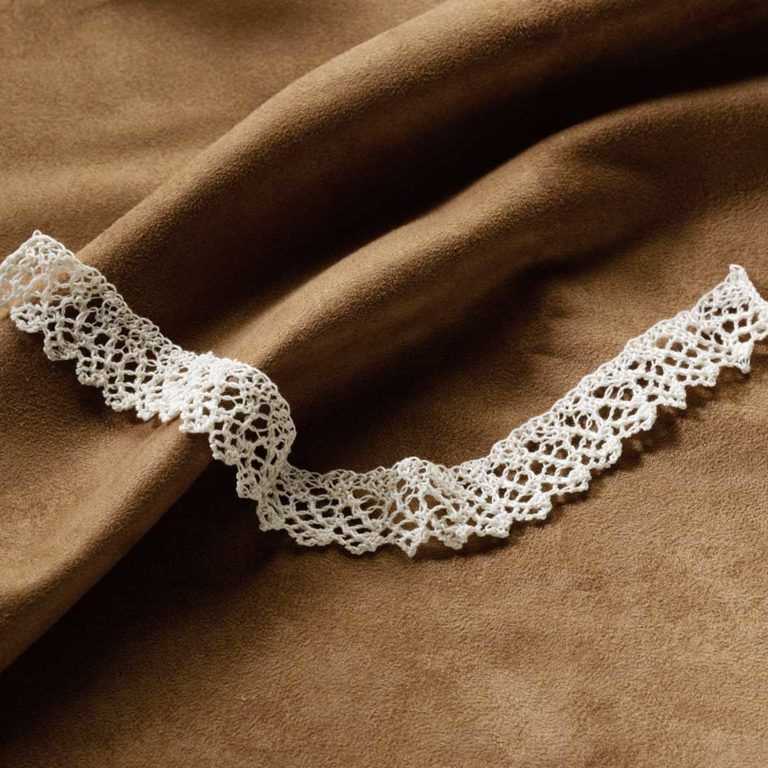
Knitting with cotton lace yarn is a beautiful and versatile way to create delicate and intricate patterns. Cotton lace yarn is lightweight and breathable, making it perfect for summer garments and accessories. Whether you’re a beginner or an experienced knitter, there are endless possibilities when it comes to cotton lace knitting patterns.
One popular cotton lace knitting pattern is the lace shawl. These shawls can be both elegant and practical, offering a lightweight layer of warmth and style. The intricate lace patterns used in shawls are created by knitting a combination of yarn overs, knit two togethers, and other simple stitches. The result is a stunning and delicate lace design that can be worn year-round.
What are some other cotton lace knitting patterns?
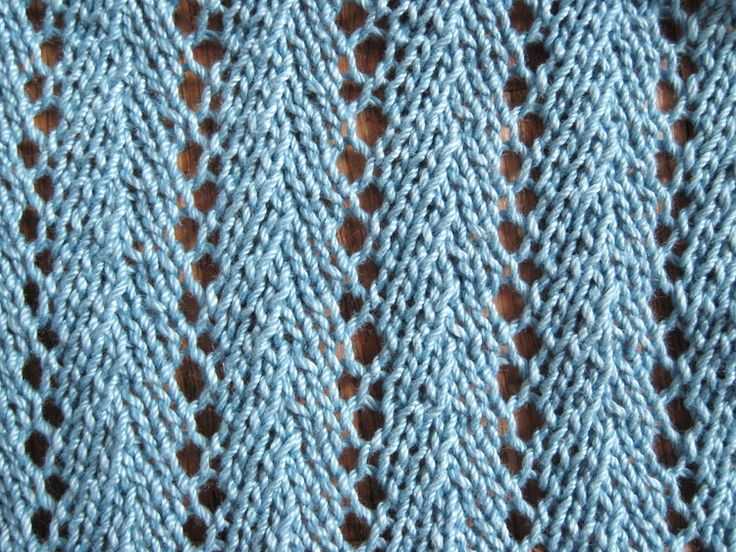
- Lace Scarf: A lace scarf is a versatile accessory that can be dressed up or down. Knitting a lace scarf with cotton lace yarn adds a touch of elegance to any outfit.
- Lace Cardigan: A lace cardigan is a beautiful addition to any wardrobe. The delicate lace pattern creates an eye-catching design, and the cotton lace yarn ensures a comfortable fit.
- Lace Socks: Lace socks are a fun and unique project to try. The lightweight cotton lace yarn makes them perfect for warmer weather, while the intricate lace pattern adds a touch of femininity.
- Lace Baby Blanket: Knitting a lace baby blanket with cotton lace yarn creates a soft and delicate blanket perfect for a newborn. The lace pattern adds an extra touch of sweetness to this special gift.
With so many options available, exploring different cotton lace knitting patterns allows you to showcase your creativity and create beautiful, handcrafted pieces. Whether you’re knitting for yourself or creating a special gift for someone else, cotton lace knitting patterns offer endless possibilities for exquisite and unique designs.
What is cotton lace knitting?
Cotton lace knitting is a technique in which delicate and intricate patterns are created using cotton yarn. It is a popular choice among knitters who prefer working with natural fibers and enjoy the delicate look of lace. Cotton lace knitting is often used to create lightweight and breathable garments such as shawls, scarves, and summer sweaters.
Key features: Cotton lace knitting incorporates a variety of stitches and techniques to create intricate lace patterns. These patterns often involve yarn overs, decreases, and various lace motifs to create the desired effect. The combination of fine cotton yarn and intricate stitch patterns results in a delicate and airy fabric.
- Yarn choice: When it comes to cotton lace knitting, choosing the right yarn is crucial. The yarn should be lightweight and have good stitch definition to showcase the intricate lace patterns. Mercerized cotton yarns are often preferred for their shine and drape.
- Needle selection: Lace knitting is typically done with fine knitting needles to create a tight, even fabric. The needle size can vary depending on the desired gauge and the yarn thickness.
- Pattern selection: There are countless cotton lace knitting patterns available, ranging from simple to complex designs. Knitters can choose from a variety of lace motifs, edging patterns, and garment styles to suit their preferences.
Tips for cotton lace knitting:
- Use stitch markers: Lace knitting often involves complex stitch patterns, so using stitch markers can help keep track of pattern repeats and decreases.
- Block your finished project: Blocking is an essential step in cotton lace knitting to enhance the lace motifs and shape the garment. It involves gently stretching and shaping the knit fabric to its desired dimensions.
- Take it slowly: Cotton lace knitting requires careful attention to detail, so it’s important to take your time and work at a comfortable pace. Tension and evenness in your stitches are crucial for achieving a beautiful lace fabric.
History of Cotton Lace Knitting
Cotton lace knitting is a technique that has a long and rich history, originating in the 17th century. Lace knitting involves creating delicate patterns using a combination of yarn overs, decreases, and increases to create intricate designs. While lace knitting has been traditionally associated with fine silk and wool yarns, cotton lace knitting has become increasingly popular due to its light and breathable nature.
The history of cotton lace knitting can be traced back to the industrial revolution when cotton became more readily available and affordable. At the time, lace knitting was primarily done using luxury fibers such as silk and wool. However, as cotton production increased, knitters began to experiment with using cotton yarn to create lace patterns.
One of the earliest examples of cotton lace knitting can be seen in the Shetland lace shawls, which were knitted in the 19th century. These shawls were often made using fine cotton yarn and featured intricate lace patterns that showcased the knitter’s skill and artistry. Cotton lace knitting soon spread across Europe and became particularly popular in countries like Ireland, where cotton production was thriving.
During the 20th century, cotton lace knitting continued to evolve, with new patterns and techniques being developed. Knitters started incorporating more complex stitch patterns, including bobbles, nupps, and cables, to create even more intricate designs. The introduction of lace knitting charts also made it easier for knitters to follow patterns and create consistent and precise lace patterns.
Today, cotton lace knitting remains a popular technique among knitters. With advancements in technology, cotton yarns have become even softer and more versatile, making them ideal for creating intricate lace designs. Whether knitted as a shawl, scarf, or garment, cotton lace knitting continues to be celebrated for its beauty and craftsmanship.
Advantages of cotton lace knitting patterns
When it comes to knitting patterns, cotton lace is a popular choice among knitters. This lightweight fabric offers a number of advantages that make it ideal for creating delicate and intricate lace designs.
1. Breathability: Cotton lace is known for its breathability, making it perfect for warm weather garments and accessories. The open and airy nature of lace allows for air circulation, keeping the wearer cool and comfortable.
2. Softness: Cotton is naturally soft and gentle against the skin, making it a great choice for those with sensitive skin or allergies. The smooth texture of cotton lace is not only comfortable to wear, but also adds a luxurious touch to any project.
3. Durability: Despite its delicate appearance, cotton lace is surprisingly durable. The strong fibers of cotton make it resistant to wear and tear, ensuring that your lace creations will last for years to come.
4. Versatility: Cotton lace can be used to create a wide range of designs, from intricate shawls and scarves to delicate doilies and table runners. The versatility of cotton lace patterns allows for endless possibilities and creative expression.
5. Easy care: Cotton lace is also known for its easy care requirements. Most cotton lace can be machine washed and dried, making it a practical choice for everyday use.
In conclusion, the advantages of cotton lace knitting patterns are clear. From its breathability to its softness, durability, versatility, and easy care, cotton lace is a fantastic choice for creating beautiful and functional lace designs.
Essential Tools for Cotton Lace Knitting
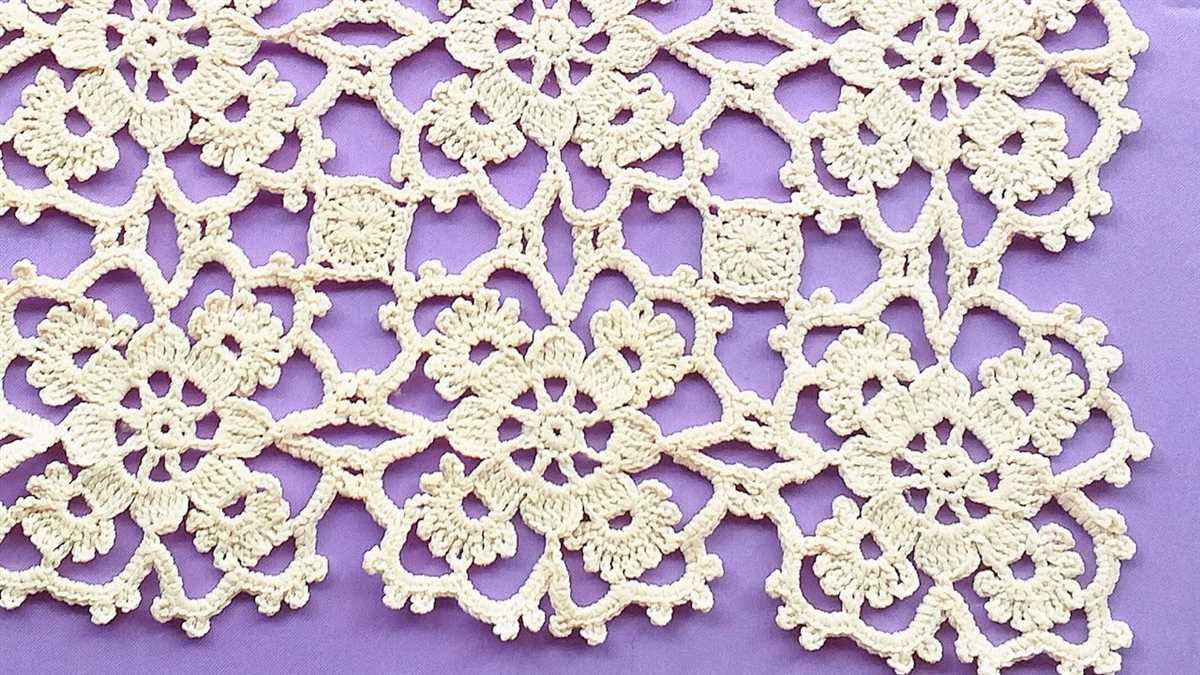
When it comes to cotton lace knitting, having the right tools is essential for a successful and enjoyable knitting experience. From needles to stitch markers, there are a few key items that every lace knitter should have in their arsenal.
1. Lace Knitting Needles
Cotton lace knitting requires needles with sharp tips and a smooth surface to easily maneuver through delicate lace stitches. Circular needles are often preferred for lace knitting as they can hold a large number of stitches and distribute the weight of the project evenly.
2. Stitch Markers
Stitch markers are crucial for keeping track of stitch patterns and increases or decreases in lace knitting. They can be placed between pattern repeats or used to mark specific stitches, making it easier to follow the lace pattern accurately.
3. Row Counter
A row counter is an invaluable tool for tracking the number of rows in a lace knitting project. It helps in keeping the stitch count consistent and ensures that the lace pattern is symmetrical throughout the project.
4. Blocking Tools
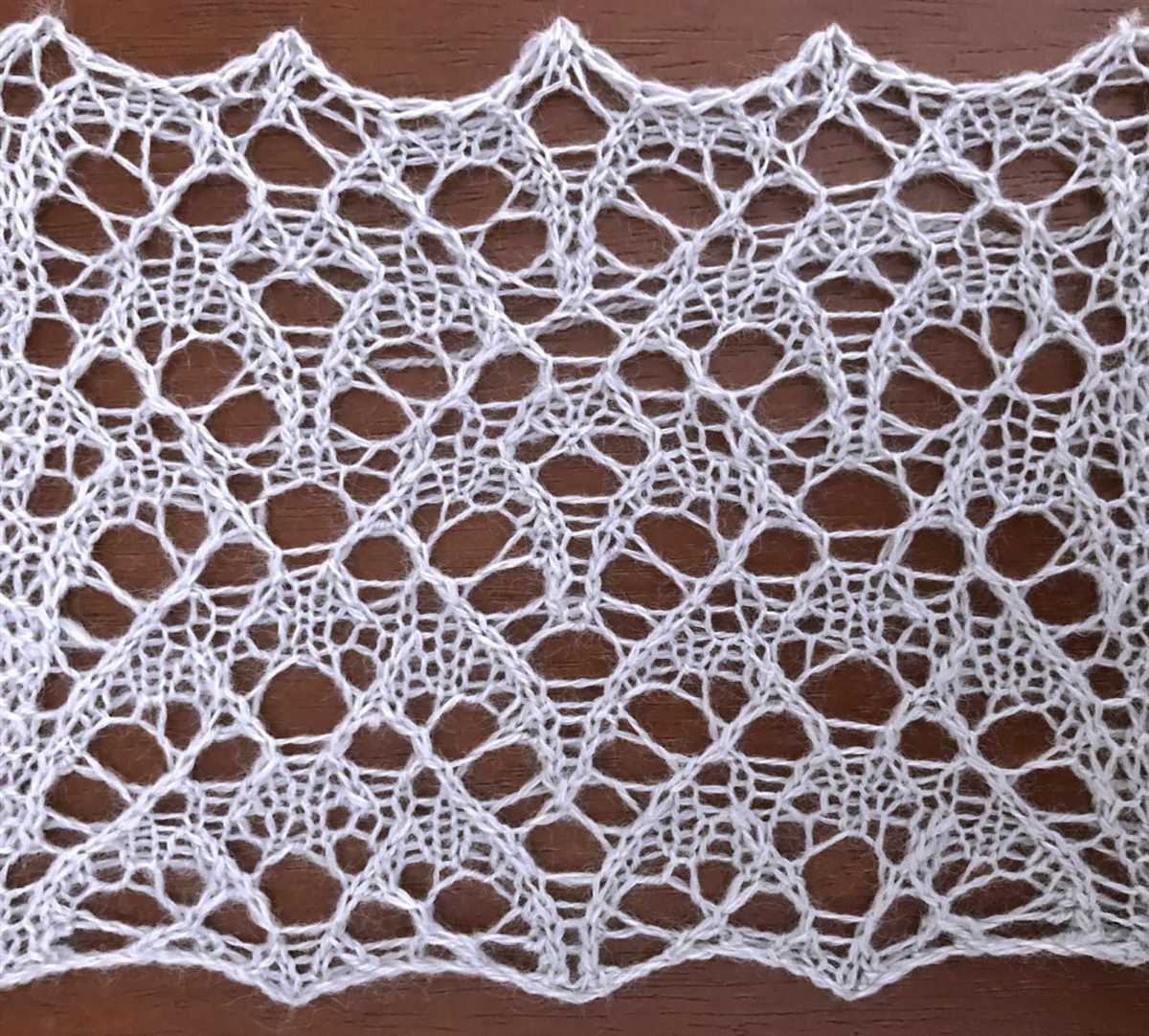
Cotton lace knitting often requires blocking to shape the lace stitches and open up the pattern. Blocking tools such as blocking wires, pins, and mats are essential for achieving a professional and polished finish to your lace knitting projects.
5. Yarn Swift and Ball Winder
For winding skeins of yarn into neat and organized balls, a yarn swift and ball winder are highly recommended. They make the process quick and efficient, ensuring that the yarn is ready for knitting without any tangles or knots.
With these essential tools in hand, you will be well-equipped to tackle any cotton lace knitting project. Whether you’re a beginner or an experienced knitter, investing in good quality tools will greatly enhance your knitting experience and allow you to create stunning lace garments and accessories.
Basic techniques for cotton lace knitting
Knitting cotton lace can be a beautiful and intricate way to create delicate and airy garments. Here are some basic techniques to help you get started on your cotton lace knitting journey.
1. Choosing the right yarn
When it comes to cotton lace knitting, it’s important to choose a yarn that is suitable for this type of delicate work. Look for cotton yarns that have a smooth texture and excellent stitch definition. Mercerized cotton yarns, which have been treated to increase their strength and shine, are often a popular choice for lace knitting.
2. Using smaller needles
To achieve the intricate lace patterns, it is recommended to use smaller knitting needles than what the yarn’s label suggests. This will help create tighter and more defined stitches, giving your lacework a more delicate and elegant appearance.
3. Reading lace knitting charts
Lace knitting patterns are typically presented in chart form, where various symbols represent different stitches and their placement. Learning how to read lace knitting charts is essential for understanding the pattern and creating the correct lace design. Take time to familiarize yourself with the symbols and how they correspond to different stitches.
4. Lifelines and stitch markers

When working on intricate lace patterns, it can be helpful to use lifelines and stitch markers. Lifelines are rows of waste yarn that are inserted into the fabric at regular intervals. They act as a safety net, allowing you to easily rip back to a specific point if you make a mistake. Stitch markers can help you keep track of pattern repeats and make it easier to identify any errors.
5. Blocking your finished garment
Blocking is an essential step in lace knitting. After completing your cotton lace project, gently wash it and lay it flat to dry. Then, use blocking wires or pins to stretch and shape the fabric according to the desired measurements. Blocking helps to even out stitches, open up lace patterns, and give your finished garment its final shape.
By mastering these basic techniques, you’ll be well on your way to creating stunning cotton lace pieces that showcase your knitting skills and creativity.
Beginner-friendly cotton lace knitting patterns
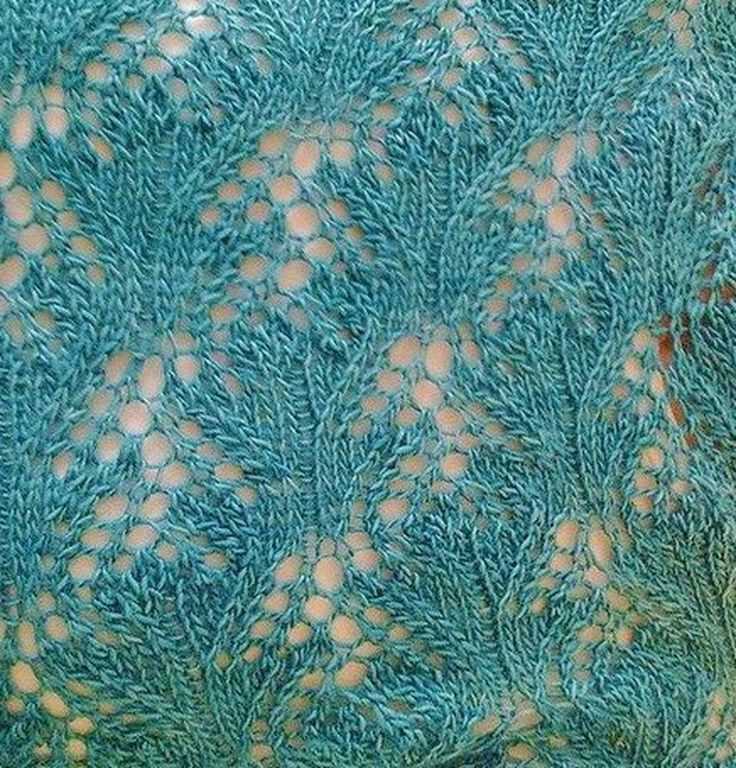
If you’re a beginner knitter looking to dive into lace knitting, cotton lace patterns are a great place to start. Cotton yarn is easy to work with and provides a wonderful drape for lace projects. Plus, the breathable nature of cotton makes it perfect for warm weather or sensitive skin. Below are a few beginner-friendly cotton lace knitting patterns to help you get started.
1. Lace Bookmark
For a small and manageable lace project, try knitting a lace bookmark. This pattern typically uses basic lace stitches such as yarnovers and decreases, making it perfect for beginners. Not only will you end up with a beautiful bookmark to use or gift, but you’ll also gain valuable practice in following lace charts and patterns.
2. Lace Dishcloth
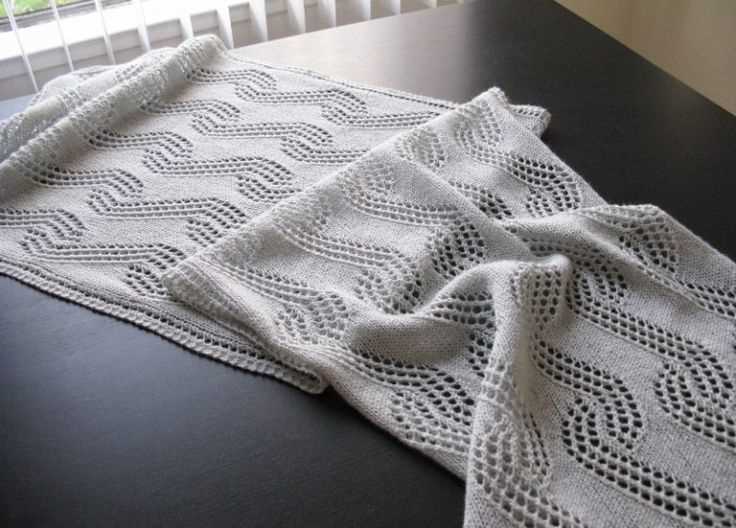
Knitting a lace dishcloth is another beginner-friendly project that is both functional and beautiful. Choose a simple lace pattern and cotton yarn with good absorbency for a dishcloth that will be perfect for washing dishes or cleaning countertops. The repetition of the lace stitches will help you improve your lace knitting skills while creating a useful item for your home.
3. Lace Headband
If you’re looking to try lace knitting on a wearable item, a lace headband is a great option. With its small size and simple construction, a lace headband is perfect for practicing lace stitches without feeling overwhelmed. Choose a cotton yarn with a bit of stretch to ensure a comfortable fit, and experiment with different lace patterns to create a unique accessory.
4. Lace Scarf
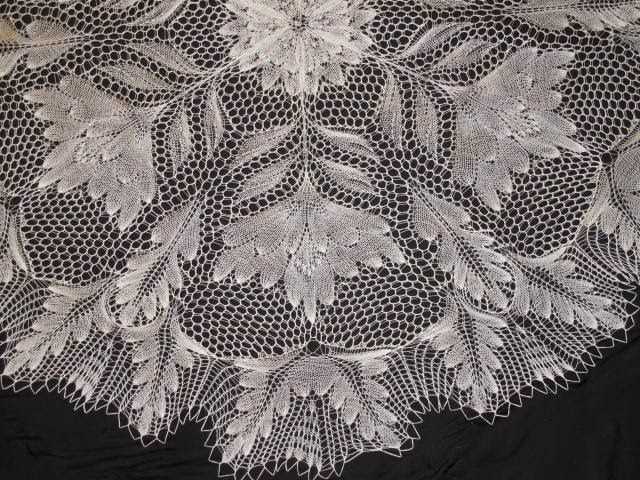
Once you’ve gained confidence with smaller lace projects, you can tackle a lace scarf. Choose a lightweight cotton yarn in a color you love and find a lace pattern that suits your style. Whether you prefer delicate, intricate lace or a more simple design, a lace scarf is a versatile accessory that can be worn year-round.
Overall, these beginner-friendly cotton lace knitting patterns are a great way to practice your lace knitting skills while creating useful and beautiful items. Whether you choose a bookmark, dishcloth, headband, or scarf, you’ll find that cotton yarn provides a lovely drape for lace and makes for enjoyable knitting. So grab your needles, some cotton yarn, and get started on your lace knitting journey!
Intermediate cotton lace knitting patterns
Are you an experienced knitter looking for a new challenge? Intermediate cotton lace knitting patterns might be just what you’re looking for. Cotton lace is known for its delicate and intricate designs, and intermediate patterns offer a bit more complexity than beginner patterns, allowing you to expand your knitting skills.
Why choose cotton lace?
Cotton lace is perfect for those who love lightweight and breathable garments. It’s great for warm weather and can be worn in both casual and formal settings. The intricate lace designs add a touch of elegance and femininity to any project. Cotton also has fantastic stitch definition, which makes lace patterns really pop.
What to expect in intermediate patterns?
Intermediate cotton lace knitting patterns typically involve more advanced stitch patterns, such as lace motifs, twisted stitches, and even cables. These stitches might require more concentration and practice to master, but the end result is well worth the effort.
Sample patterns:
- Leaf Lace Shawl: This pattern features a beautiful leaf lace motif that cascades throughout the shawl. The combination of intricate lace stitches and the softness of cotton yarn creates a stunning accessory.
- Lacy Cardigan: Knit a lightweight cardigan with an all-over lace pattern. The cotton yarn gives it a dainty and feminine look, making it perfect for layering in the warmer months.
- Openwork Hat: This pattern features an openwork stitch pattern that creates a lacy texture. The cotton yarn keeps the hat breathable and comfortable, making it suitable for spring or summer.
- Ruffled Scarf: Knit a ruffled scarf with delicate lace details. The cotton yarn gives it a soft and flowy drape, perfect for adding a touch of elegance to any outfit.
Intermediate cotton lace knitting patterns are a great way to challenge yourself and create beautiful, intricate pieces. Whether you’re knitting for yourself or as a gift for someone special, these patterns will allow you to expand your knitting skills and create stunning garments and accessories.
Advanced cotton lace knitting patterns
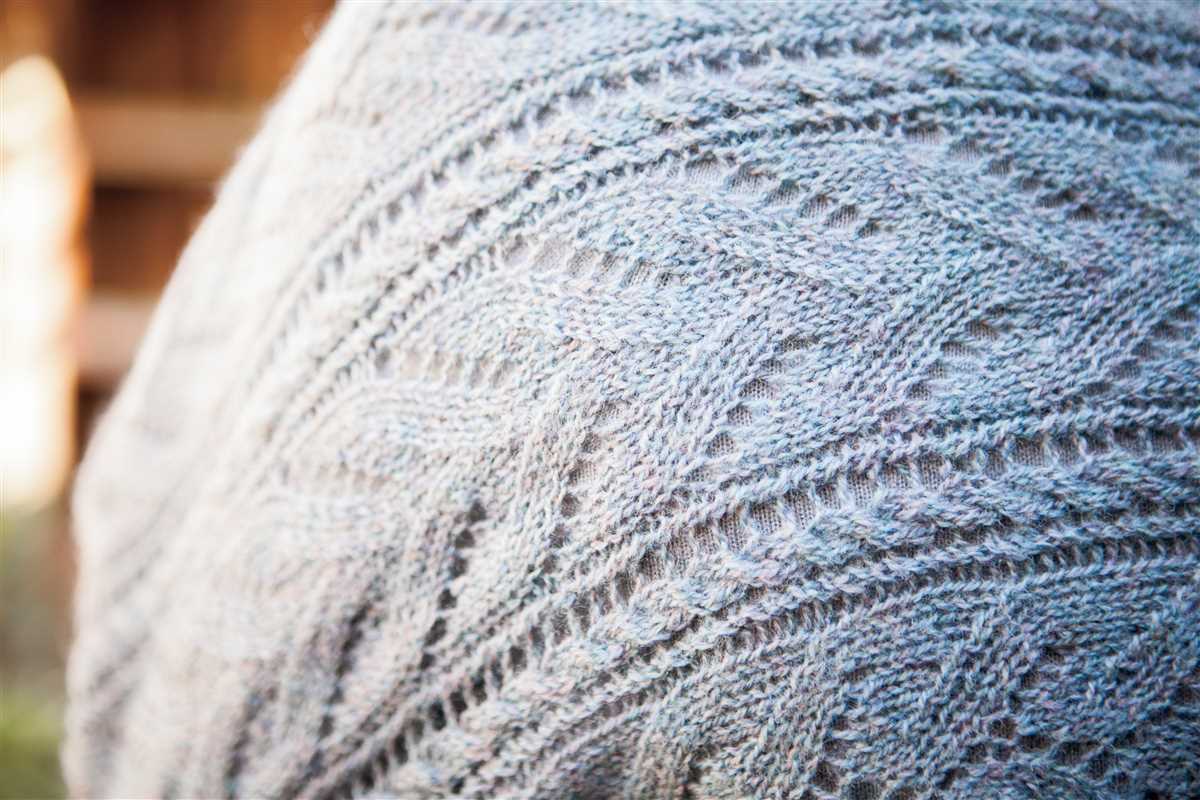
When it comes to knitting with cotton lace patterns, advanced knitters are always ready to take on the challenge. These intricate patterns require a high level of skill and attention to detail, but the end result is always stunning.
One popular advanced cotton lace knitting pattern is the “Grand Lace Shawl.” This pattern features an intricate lace motif that creates a delicate and elegant look. Knitters can choose to work it in a single color or create a gradient effect by using multiple shades of cotton yarn. The finished shawl is perfect for special occasions or as a statement piece.
Another advanced cotton lace pattern is the “Vine Lace Cardigan.” This pattern combines lace panels with a classic cardigan shape to create a stylish and sophisticated garment. The vine lace motif adds an element of nature to the design, making it a unique and eye-catching piece. Knitters who tackle this pattern will need to be comfortable with lace stitches and shaping techniques.
For those who are looking for a more challenging project, the “Elegance Lace Dress” is a perfect choice. This pattern features a beautiful lace pattern that covers the entire dress, creating a timeless and elegant look. The dress can be made in a shorter length for a more casual feel or in a longer length for a formal occasion. Knitters who take on this project will need to be comfortable with lace knitting, garment construction, and intricate finishing techniques.
Overall, advanced cotton lace knitting patterns offer a unique and rewarding challenge for experienced knitters. With their intricate lace motifs and beautiful designs, these patterns create stunning finished garments and accessories. Whether you’re looking to create a shawl, cardigan, or dress, there is an advanced cotton lace pattern out there waiting for you to try your hand at it.
Popular Cotton Lace Knitting Stitches
When it comes to creating beautiful lace patterns in cotton yarn, there are several popular knitting stitches that are commonly used. These stitches create delicate and intricate lace patterns that are perfect for summer garments and accessories. Here are a few of the most popular cotton lace knitting stitches:
1. Feather and Fan Stitch
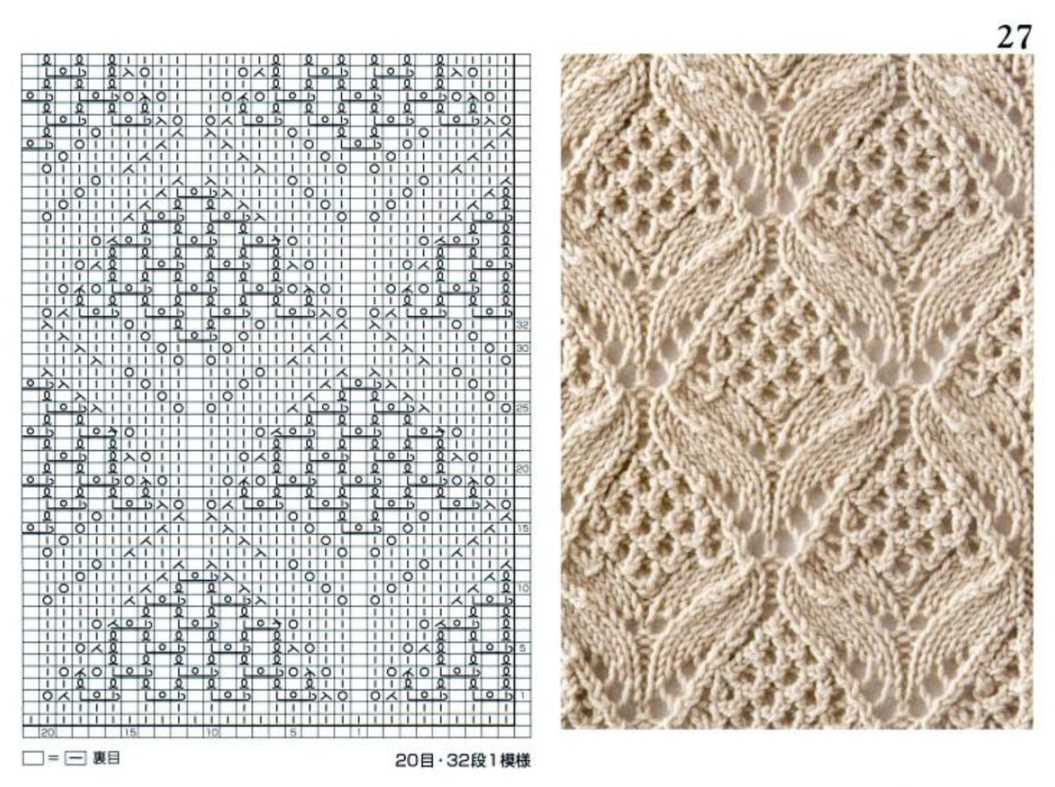
The Feather and Fan stitch is one of the most classic lace stitches in knitting. It creates a wavy pattern that resembles the edge of a feather or a fan. This stitch is often used in shawls and scarves due to its elegant and airy appearance. Knitting the Feather and Fan stitch in cotton yarn gives it a crisp and clean look.
2. Openwork Ladder Stitch
The Openwork Ladder stitch is another popular choice for cotton lace knitting. It creates a beautiful ladder-like pattern that is both delicate and eye-catching. This stitch is often used in summer tops and cardigans, as it adds a touch of femininity to any garment. When knitted in cotton, the Openwork Ladder stitch has a light and breathable quality.
3. Lace Rib Stitch
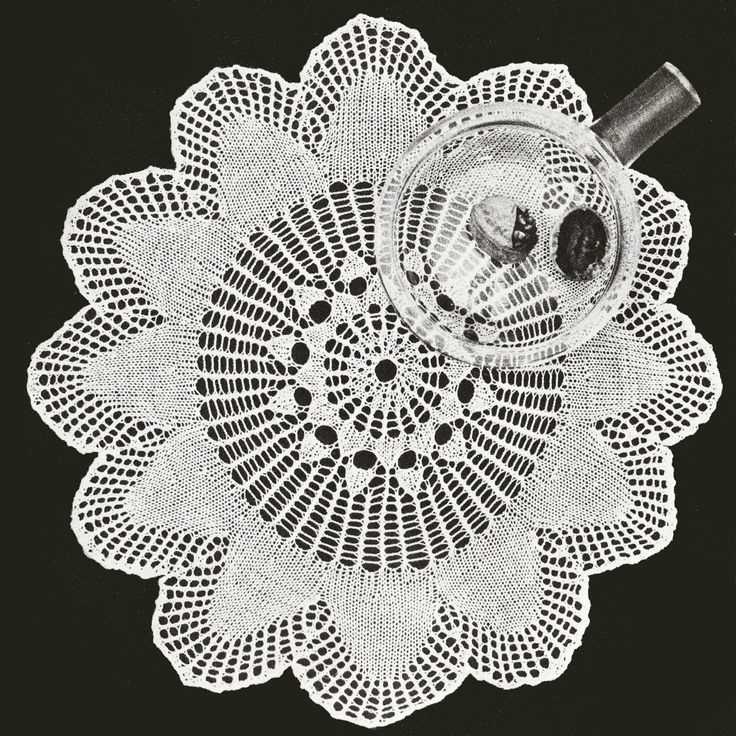
The Lace Rib stitch combines the elegance of lace with the structure of a rib pattern. It creates a textured and slightly stretchy fabric that is perfect for summer sweaters and accessories. The Lace Rib stitch can be knitted in cotton yarn to give it a soft and drapey feel, making it a versatile stitch for a variety of projects.
4. Eyelet Lace Stitch
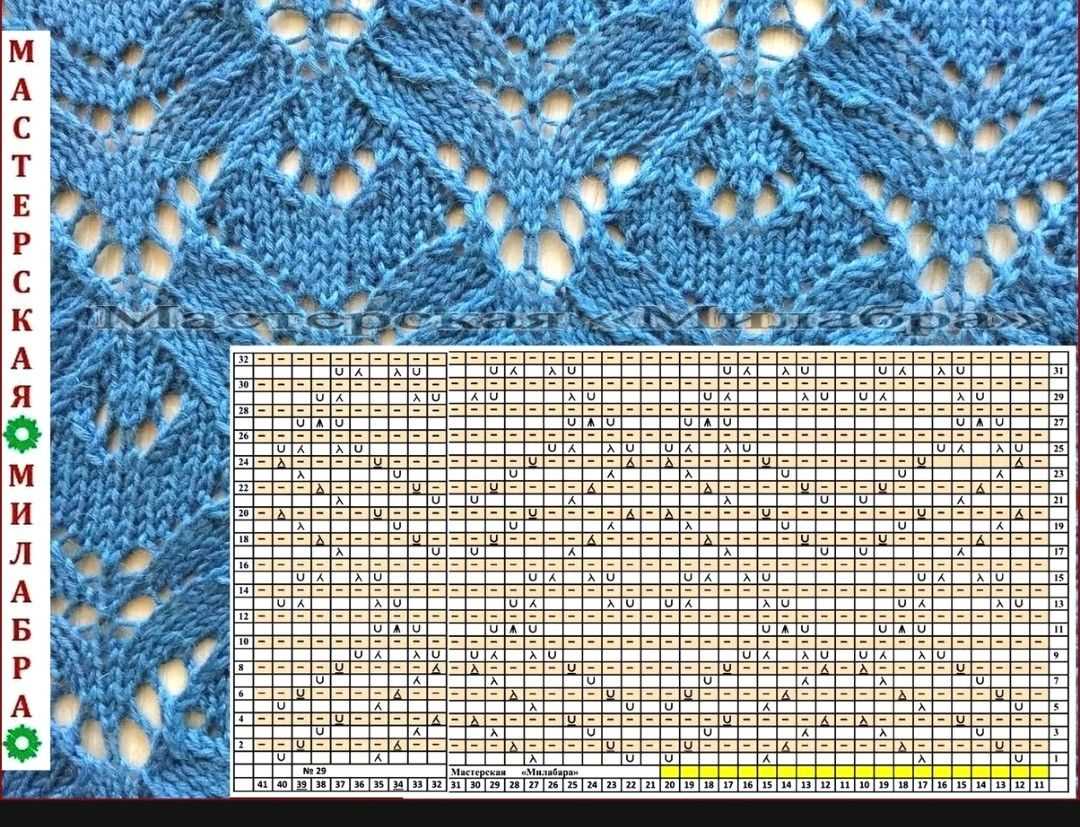
The Eyelet Lace stitch is a simple yet stunning lace pattern that is commonly used in cotton knitting projects. It creates small eyelet holes that form a beautiful and delicate pattern. The Eyelet Lace stitch can be used in a wide range of garments and accessories, from baby blankets to lightweight summer tops. Knitting this stitch in cotton yarn gives it a fresh and summery look.
Tips and tricks for successful cotton lace knitting
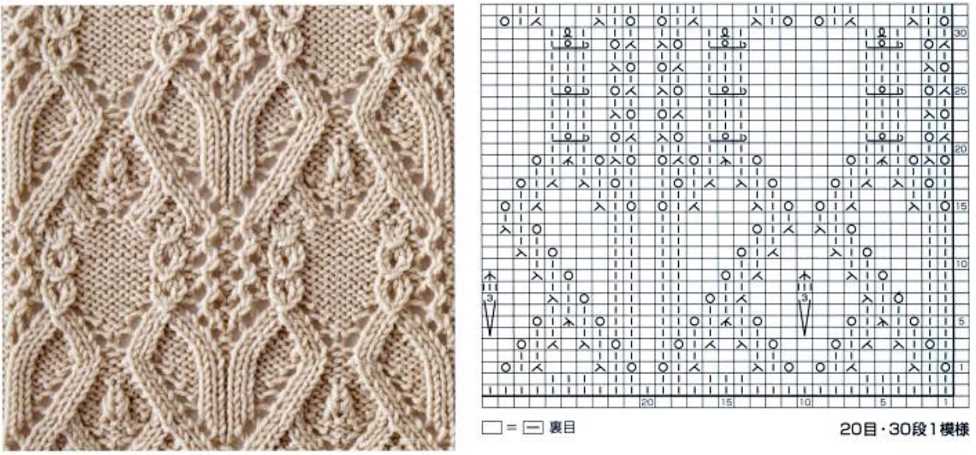
Cotton lace knitting can be a delicate and rewarding craft, but it does come with its own set of challenges. Here are some tips and tricks to help you achieve success with your cotton lace knitting projects.
1. Use a smaller needle size
When working with cotton lace yarn, it’s important to use a smaller needle size than you might typically use for other yarns. Cotton doesn’t have as much elasticity as wool or acrylic, so using a smaller needle will help create a tighter, more defined lace pattern.
2. Block your finished project
Blocking is an essential step in cotton lace knitting. After you have finished your project, gently soak it in lukewarm water, then lay it flat on a blocking board or towel. Use pins to shape the lace and smooth out any unevenness. Allow it to dry completely before removing the pins. This will help open up the lace pattern and give your project a professional finish.
3. Choose the right cotton yarn
Not all cotton yarns are suitable for lace knitting. Look for a yarn that has a good twist and is smooth to the touch. This will help the stitches slide easily on the needles and create a more defined lace pattern. Avoid yarns that are too stiff or heavy, as they can make the lace look bulky and lose its delicate appearance.
4. Practice good tension control
Tension control is crucial in cotton lace knitting to maintain an even and consistent fabric. Make sure to keep your stitches spaced evenly and not too tight. Take breaks if your hands are feeling tired or cramped to avoid creating tension in the stitches. Regular practice will help improve your tension control skills over time.
- 5. Keep track of your pattern: Cotton lace patterns can be intricate and easy to lose your place in. Use stitch markers or highlighter tape to mark off completed sections and keep track of where you are in the pattern.
- 6. Pay attention to stitch count: Cotton lace patterns often require a specific stitch count for each row or section. Make sure to carefully count your stitches as you go to ensure that your lace pattern will come out correctly.
- 7. Practice patience: Cotton lace knitting can be time-consuming and require a lot of concentration. Take your time and be patient with yourself as you learn new stitches and techniques. The end result will be worth the effort.
Remember, practice makes perfect, so don’t be discouraged if your first few cotton lace knitting projects don’t turn out exactly as you had hoped. With time and practice, you will become more skilled at creating beautiful lace patterns with cotton yarn.
How to care for cotton lace knitted items
When it comes to caring for your cotton lace knitted items, it’s important to follow a few simple guidelines to ensure their longevity and beauty. Cotton is a delicate material, so it requires special attention to keep it looking its best.
Handwashing is key: Handwashing is the best way to clean cotton lace knitted items to avoid any damage. Fill a basin with lukewarm water and add a mild detergent specifically designed for delicate fabrics. Gently submerge the item in the water and agitate it with your hands for a few minutes. Rinse the item thoroughly, making sure to remove all soap residue.
Avoid wringing or twisting: After rinsing, lift the item out of the water and gently squeeze out the excess moisture. It’s important to avoid wringing or twisting the cotton lace, as this can distort the delicate stitches and cause them to lose their shape.
Reshape and dry flat: Lay a clean, dry towel on a flat surface and place the cotton lace knitted item on top of it. Gently reshape the item to its original shape, making sure the lace pattern is still visible. Leave it to dry flat, away from direct sunlight or heat sources. Avoid hanging cotton lace knitted items, as this can stretch them out of shape.
Store properly: When your cotton lace knitted item is completely dry, fold it carefully and store it in a clean, dry place, away from direct sunlight. You may also consider placing it in a zip-top bag to protect it from any potential damage.
Be mindful of accessories: When wearing your cotton lace knitted item, be mindful of accessories, such as rings or bracelets, that could snag or pull on the delicate lace. It’s best to remove any accessories before putting on or taking off your cotton lace knitted item to prevent any damage.
Where to find cotton lace knitting patterns
In conclusion, finding cotton lace knitting patterns can be an exciting and fulfilling experience for knitters who are looking to create delicate and intricate designs. There are numerous resources available both online and in physical stores that offer a wide range of patterns to cater to different skill levels and preferences.
Some popular websites where you can find cotton lace knitting patterns include:
- Ravelry: Ravelry is a well-known online community for knitters and crocheters where you can find an extensive collection of patterns, including cotton lace options. The website allows you to search for patterns based on various criteria such as difficulty level, project type, and yarn weight.
- Knitting magazines: Many knitting magazines, both print and online, feature cotton lace knitting patterns in their issues. Subscribing to these magazines or purchasing individual issues can provide you with a regular source of new patterns and inspiration.
- Bookstores and libraries: Bookstores and libraries often have a selection of knitting books that include cotton lace patterns. Browsing through these books can give you access to a wide variety of designs and techniques.
Additionally, don’t forget to check out local knitting groups and yarn shops in your area. These resources can be a valuable source of recommendations and may even offer knitting classes or workshops focused on lace knitting.
With so many options available, there is no shortage of cotton lace knitting patterns for you to explore and experiment with. So grab your needles, choose your favorite pattern, and let your creativity flourish as you create beautiful lace pieces.